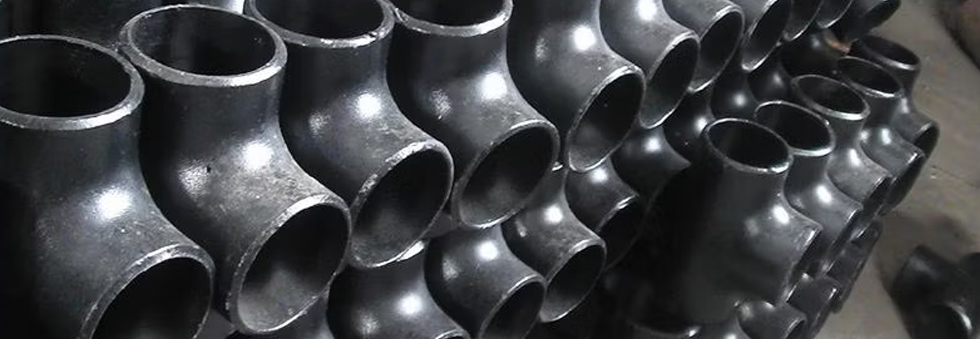Why Carbon Steel Elbows Are Preferred in the Oil & Gas Industry

An oil and gas sector is subjected to extreme conditions such as high application pressure, drastic temperature changes, and corrosive environments. Appropriate materials should be selected for pipeline components to endure harsh conditions regarding long-lasting, safe, and efficient operation. Among the various types of materials, carbon steel elbows form an important part of the pipeline connection in oil and gas applications. Having a unique combination of strength, cost-effectiveness, and versatility, these items are indispensable in this sector. The article will discuss why carbon steel elbows remain a preferred choice in the oil and gas industry.
1. Very Strong and Tough
The main reason why carbon steel elbows are widely employed in the oil and gas pipelines is their unrivaled mechanical properties. They can withstand very high pressures in the systems associated with transportation for long distances of oil, gas, and other fluids.
- High Pressure Resistance: A carbon steel elbow can withstand strong internal pressures so that it does not leak or rupture.
- Endures Extremes of Heat and Cold: They will keep working through dry heat or freezing cold, making them suitable for the varied climates and processes involved.
2. Economicalness
Cost plays an important role in large-scale initiatives. Elbows made of carbon steel provide a great combination of price and performance. Carbon steel has the following advantages over exotic alloys or stainless steel:
- Reduced Initial Costs: It offers equivalent performance at a lower cost than substitute materials.
- Convenience of Fabrication and Maintenance: Carbon steel is less expensive over time since it is simpler to make and maintain.
3. Adaptability in Design
Because carbon steel elbows are available in a variety of shapes and sizes, they may be used in a broad range of oil and gas applications.
- 90-Degree Elbows: For abrupt changes in pipeline direction.
- 45-Degree Elbows: To provide more seamless direction changes in flow.
- Elbows with long and short radii are made to fit certain flow and space needs.
- Options for customization: Carbon steel elbows can be produced with special dimensions and coatings for increased corrosion resistance to satisfy project-specific specifications.
4. Resistance to Corrosion
In the oil and gas sector, carbon steel is extremely resistant to corrosion, while being prone to rust when unprotected.
- Surface Coatings: The elbows are protected from corrosion and chemical deterioration by epoxy or other protective coatings.
- Galvanization: Applies a zinc coating to shield against exposure to the environment.
- Internal Linings: To increase longevity when handling corrosive fluids, carbon steel elbows can be lined with certain materials.
5. Dependability in High-Stress Situations
The oil and gas sector frequently works in harsh conditions, such as arctic areas, deserts, and offshore rigs. Elbows made of carbon steel are designed to function dependably under the following circumstances:
- Impact Resistance: Carbon steel elbows are capable of withstanding abrupt impacts and mechanical stress without deforming.
- Fatigue Resistance: They provide long-term dependability even in the face of temperature and pressure fluctuations.
6. Compliance with International Standards and Industry
For example, these carbon steel elbows are manufactured according to international standards to satisfy the most stringent conditions that oil and gas applications require.
- ASME: The American Society of Mechanical Engineers ensures the reliability and quality of the industrial systems.
- ASTM: American Society for Testing and Materials specifies standard material properties and testing methods.
- API: The American Petroleum Institute adheres to oil and gas industry standards.
Such carbon steel elbows typically fulfill all the requirements of reliable performance even under stringent conditions.
7. Oil and Gas Industry Application Areas
Elbows made of carbon steel are adaptable and utilized at several points in the oil and gas supply chain, such as:
- Upstream Operations: For pipelines used for exploration and extraction, elbows manage high-pressure drilling gases and fluids.
- Midstream Pipelines: Used for long-distance transmission of natural gas and crude oil.
- Downstream Refineries: In petrochemical facilities and refineries, elbows handle high-temperature operations and corrosive fluids.
- Shutdowns and Turnarounds: Carbon steel elbows are commonly used to replace worn-out components during planned maintenance, repair, or replacement of pipelines in oil and gas facilities. Their dependability and accessibility guarantee that vital systems are promptly brought back to full functionality, reducing downtime and upholding safety regulations.
8. Safety and Environmental Advantages
The oil and gas sector operates safely and more sustainably thanks to modern carbon steel elbows:
- Leakage Prevention: Their sturdy construction reduces the possibility of leaks contaminating the environment.
- Decreased Waste: Extended service life minimizes material waste by reducing the need for frequent replacements.
In the oil and gas industry, carbon steel elbows are a vital component due to their exceptional strength, affordability, versatility, and resilience to severe conditions. If you are responsible for upstream exploration, midstream transit, or downstream refining, carbon steel elbows provide reliable and efficient pipeline operation.
For your project, are you looking for elbows made of high-quality carbon steel? Industry-grade carbon steel fittings made to satisfy the most exacting specifications are available from Pearls Metals, a top supplier in India. For professional advice and a free estimate, contact us right now!